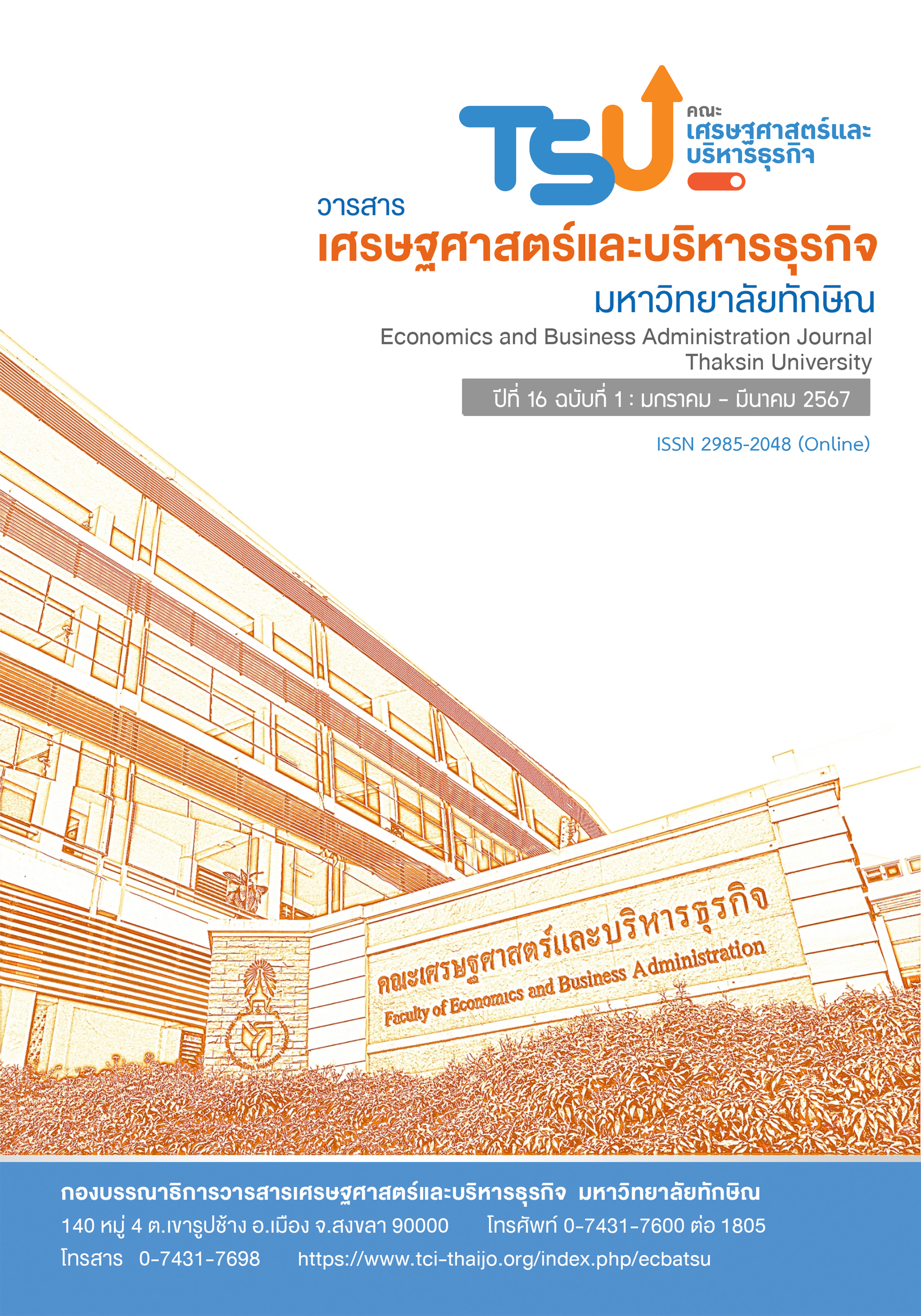Production Costing Management and Profit Planning of Processed Cape Gooseberry Processed Products “Kae Noi” Green Products, the Products of Ethnic Groups
DOI:
https://doi.org/10.55164/ecbajournal.v16i1.262939Keywords:
Cape Gooseberry Processed Products, Social Enterprise, Production Cost, Ethnic GroupAbstract
The objectives of this study were to analyze production costs for profit planning of cape gooseberry processed products and guidelines for development “Kae Noi” Green products, the products of ethnic groups. The population and sample consisted of 60 people, starting with the technique of determining the quota sampling, where the selection was done using a nonprobability sampling method, a convenience sampling method, and a purposive sampling method. The participants have to voluntarily provide information. The results showed that the cost calculation of 30 bottles of cape gooseberry wine (250 ml.) had a total production cost of 4,065.19 Baht, and the production cost per bottle is 135.51 Baht. If the selling price is set to a profit of 39% and add selling and administrative expenses of 10.00 Baht, and the price per bottle should be 199 Baht. While the cost calculation of 36 bottles of cape gooseberry sparkling wine (75 ml.) had a total production cost of 2,010.19 Baht, the production cost per bottle is 55.84 Baht. If the selling price is set to a profit of 25% and add selling and administrative expenses of 10.00 Baht, the price per bottle should be 80 Baht. The guidelines for development “Kae Noi” Green products, the products of ethnic groups of the Information Center of Knowledge, Local Wisdom and Community Innovation (Social Enterprise) have the paradigm in the development of 5 creating, 1 promoting, and 1 developing as follows: 1) Creating the skills in household economics. 2) Creating professional skills in agricultural processed products to enhance income outside the agricultural sector. 3) Creating production management cooperation and digital marketing. 4) Creating a group of agricultural occupations to gather together to create careers and generate income. 5) Creating a database on agriculture context together with the other organization and government sectors. 6) Promoting the encouragement to the target group to have a stable career. And 7) Developing the knowledge and motivating repatriated workers for agricultural occupation.
References
Bowsuwan, P., Pokathirakul, P., Charernputh, V., & Chasaengrat, C. (2022). Debt Problems of Thai Agriculturist. Journal of Educational Innovation and Research. 6(1), 265-277.
Gimzauskiene, E., & Valanciene, L. (2009). Performance Measurement System in the Context of Economics Changes. Economics & Management. 14(1), 33–42.
Information Center of Knowledge, Local Wisdom and Community Innovation. (2022). Information System for the Management of Community Financial Institutions. Equitable Education Fund: Bangkok.
Ishter, M., & Md. Akram, H. (2015). Activity-Based Costing (ABC), An Effective Tool for Better Management. Research Journal of Finance and Accounting. 6(4), 66-73.
Kae Noi Royal Project Cooperative. (2020). Annual Report Year 2020. Chiang Mai: Kae Noi Royal Project Cooperative.
Nemes, N. (2009). Comparative Analysis of Organic and Non-organic Farming Systems: A Critical Assessment of Farm Profitability. Rome: Food and Agriculture Organization of the United Nations.
Noknoi, C. (2022). Guidelines for Self-development of SMEs Entrepreneurs to the New Normal. Economics and Business Administration Journal, Thaksin University. 14(2), 83-106.
Nuidod, S., & Chanprasit, S. (2021). Cost-Benefit Analysis of the Cage Culture of Sea Bass: Case Study of Koh Yo, Mueang Songkhla District, Songkhla Province. Economics and Business Administration Journal, Thaksin University. 13(1), 163-175.
Office of the National Economic and Social Development Council. (2019). Sustainable Development Goals (SDGs). Retrieved October 21, 2022, from https://sdgs.nesdc.go.th.
Pongwiritthon, K., & Syers, S. (2022). The Development of Cultural Landscape Knowledge Management Model with Local Wisdom by Digital Marketing to Promote the Image of the Participation in Community-based Tourism Products. Economics and Business Administration Journal, Thaksin University. 14(3), 63-83.
Rattanamanee, K., Mannai, P., Satharat, P., & Chindakul, W. (2017). Studying of Cost Calculation for One Tambon One Product of Trang Province. Modern Management Journal. 15(1), 75-84.
Thana-anawat, P. (2020). Production Cost Management and Profit Planning of Community Enterprise Products Forlocal Economic Advancement, Bang Nangra Subdistrict, Bang Pahan District, Phra Nkhon Si Aytthaya Province. Journal of Kanchanaburi Rajabhat University. 9(1), 47-56.
William, L., Shannon, A., & Michael, M. (2023). Fundamentals of Cost Accounting. (7th Ed). McGraw Hill.
Downloads
Published
How to Cite
Issue
Section
License
Copyright (c) 2024 Faculty of Economics and Business Administration, Thaksin University

This work is licensed under a Creative Commons Attribution-NonCommercial-NoDerivatives 4.0 International License.




